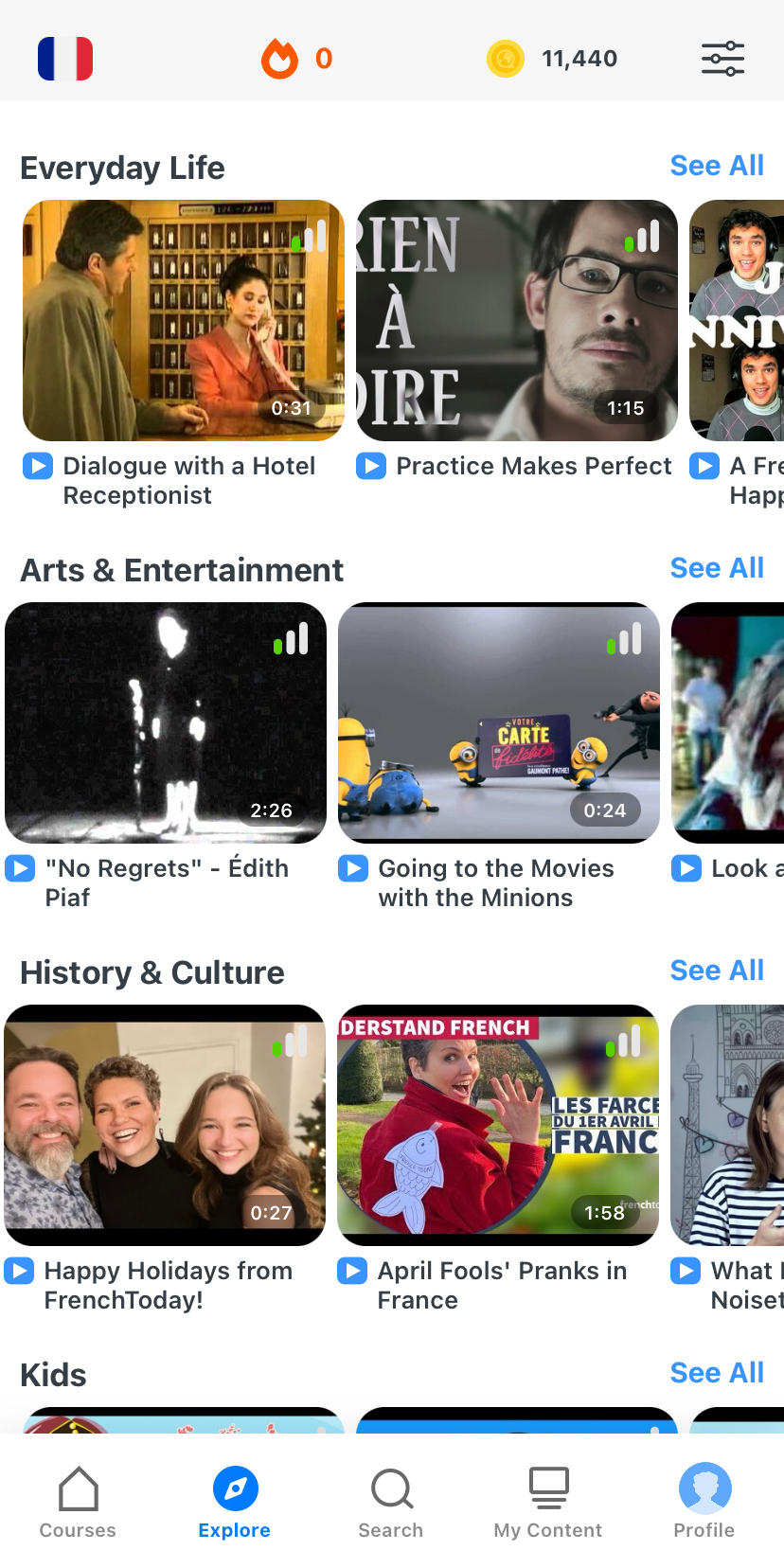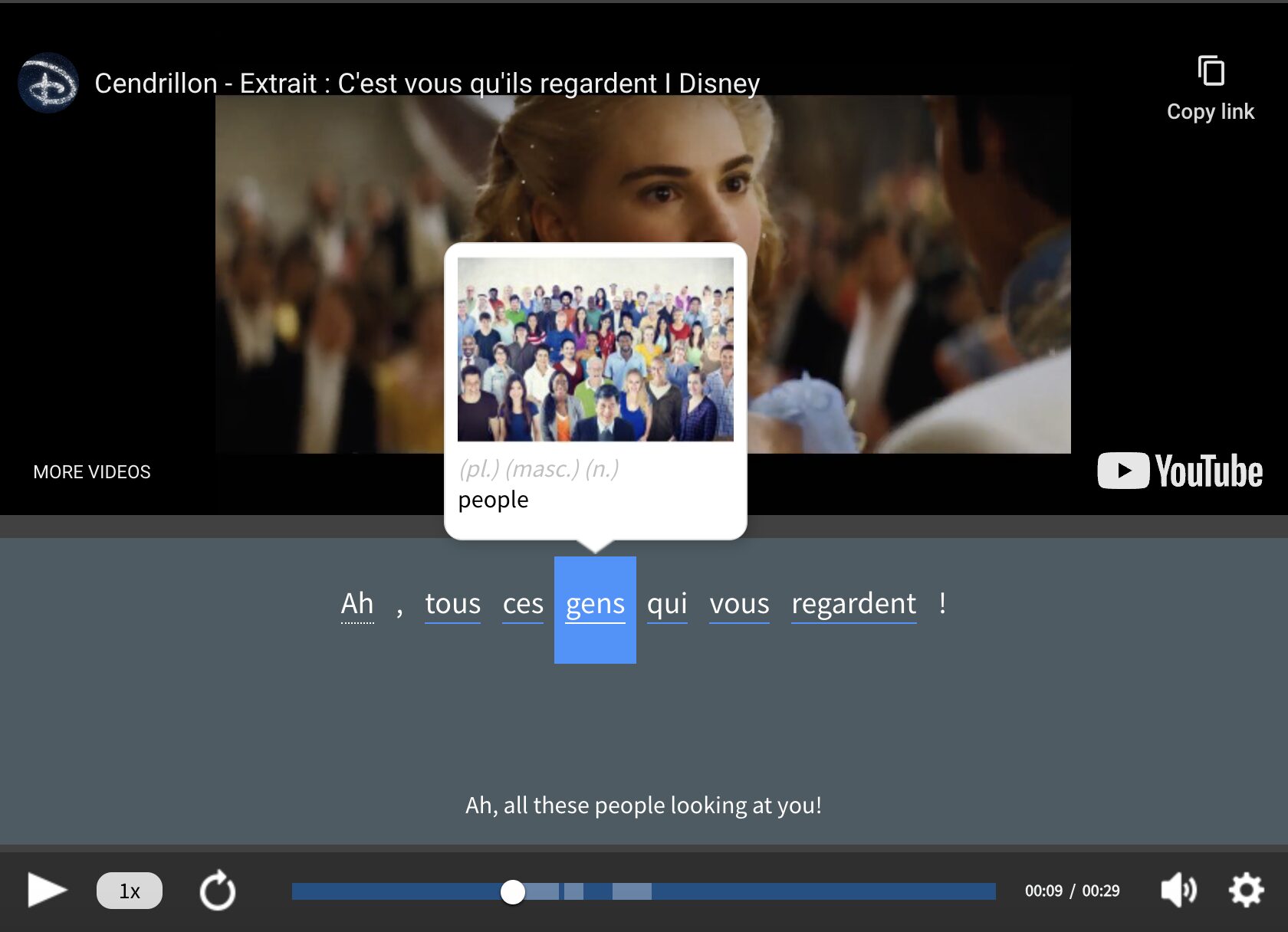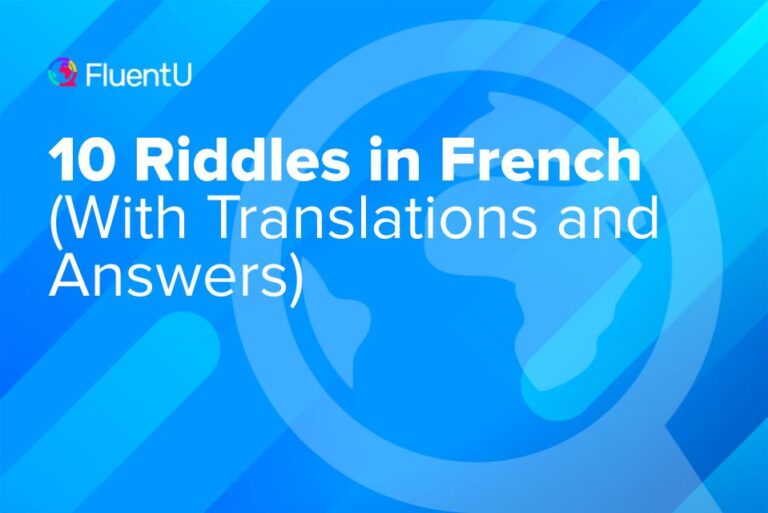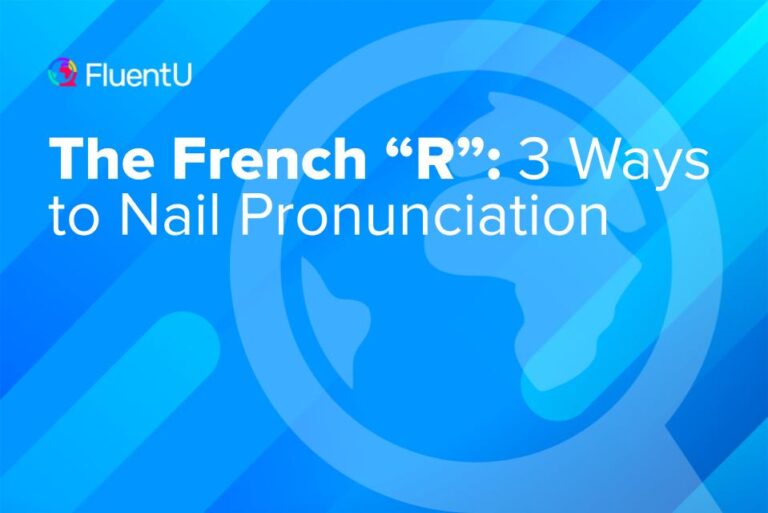Contents
- Why Quand Même is an Important Phrase
- 1. Turning Down an Offer
- 2. Explaining Something That’s Surprisingly True
- 3. Emphasizing with Slight Exasperation
- 4. Accentuating the Unflattering
- 5. Expressing Disappointment or Annoyance
- 6. Making a Point (or Stating the Obvious)
- 7. Imagining Alternatives with Quand bien même
- 8. Acknowledging the Effort
- Where to Practice Using Quand Même in Context
- And One More Thing...
What Does “Quand Même” Mean in French?
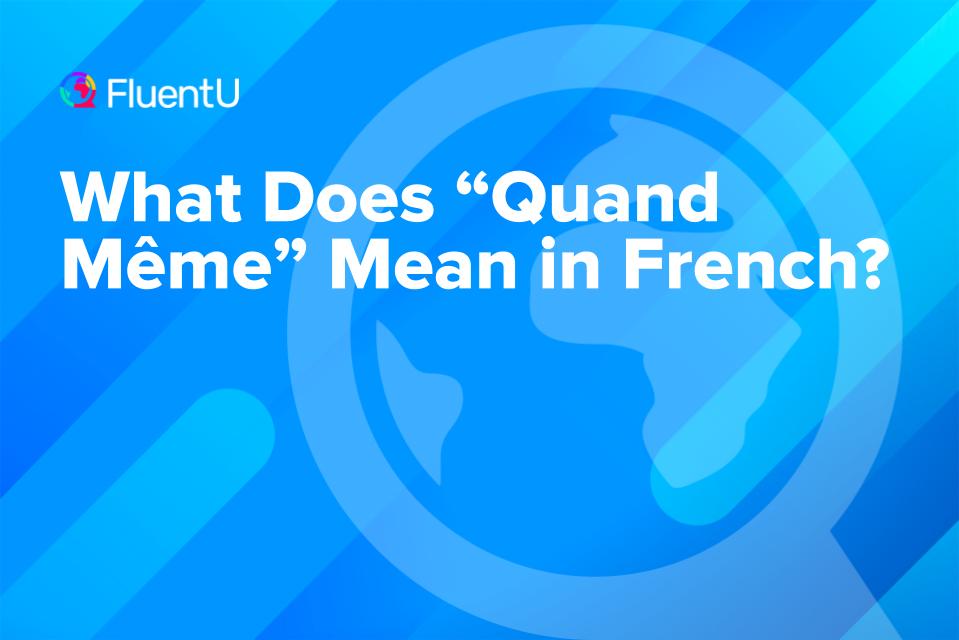
Even though the dictionary definition of quand même is usually just “nonetheless,” “nevertheless” or “all the same,” it can convey all sorts of sentiments.
So let’s see why quand même is so indispensable and take an in-depth look at the many ways we use quand même and their English equivalents. Then we’ll look at examples of it and resources you can use to practice saying it.
Download: This blog post is available as a convenient and portable PDF that you can take anywhere. Click here to get a copy. (Download)
Why Quand Même is an Important Phrase
While quand même is just one expression among many, it’s particularly useful for its versatility and the way it fits into both polite and casual conversations.
Want to politely decline something or say something sarcastic? You can use quand même.
And that’s just the start of it. Some uses of quand même even carry a certain soupçon (hint) of emotion. Whether it’s disappointment, annoyance or surprise, quand même can set the emotional tone of a sentence.
This is why there isn’t really one concrete translation for quand même in English.
Instead, there are several English equivalents to this versatile phrase that can help you learn how to use it correctly in any context.
Once you learn how to use it, you’ll find yourself using it all the time—and noticing how often other French speakers use it, too. It’s a great way to make your French sound more natural and conversational.
Most of us who study a language strive to sound more like a native speaker. By understanding how to incorporate expressions like quand même into your repertoire, you’ll get closer to the goal of sounding more like someone who grew up speaking French.
Now that you know where to find quand même in context, let’s look at the different ways you can say this versatile phrase in English.
1. Turning Down an Offer
English equivalents: Thanks, anyway/Thanks, but no thanks
A common way to use quand même is to preface it with merci (thanks).
The phrase “merci, quand même” can be used to turn down something that’s being offered to you. In English, we’d express this as “Thanks, anyway” or similar phrases.
Depending on your tone of voice, it can be used courteously—or not.
Example 1:
Tu ne veux pas aller au cinéma ce soir ? (Don’t you want to go to the movies this evening?)
Non, mais merci quand même. Je vais rester chez moi—j’ai un examen demain matin et je dois étudier. (No, but thanks anyway. I have to stay home—I have an exam tomorrow morning, and I’ve got to study.)
In one fell swoop, you’re graciously thanking your friend for the offer, and declining it just as politely.
Example 2:
Tu veux te réveiller à 5h00 pour aller faire un jogging ? (Do you want to get up at five in the morning to go jogging?)
Si le soleil dort, je devrais dormir aussi. Merci quand même. (If the sun is sleeping, I should be sleeping, too. Thanks, anyway.)
In this case, you’re using quand même to extricate yourself from an early-morning run. If you’re a morning person, you might also reply:
J’aimerais mieux me réveiller à 3h30, pour que je puisse commencer tôt. Merci quand même. (I’d rather get up at 3:30 a.m., so I can get an early start. Thanks, anyway.)
2. Explaining Something That’s Surprisingly True
English equivalents: Nonetheless/Nevertheless/Still
Quand même can be used to explain something that’s surprising, yet true. You can see it being used in this interview with French footballer Kylian Mbappé:
This usage often comes into play when someone has an unexpected quality or behavior that seems at odds with their image or reputation.
Example:
En dépit de son sale caractère, M. Grincheux est quand même consciencieux. (In spite of his foul temper, Mr. Crankypants is nonetheless conscientious.)
Bien que Jeanne est bavarde, elle est quand même repliée sur elle-même. (Even though Jeanne is talkative, she is still introverted.)
(Note that repliée sur elle-même literally means “folded upon herself.” It’s a more poetic way of saying introverti(e), introverted.)
3. Emphasizing with Slight Exasperation
English equivalents: Really/Oh, please
You can use quand même as a verbal eye roll. This use of quand même is sort of like “Oh, for goodness sake!” in English.
Example:
Quand même, tu n’as pas besoin de lui dire—il le sait bien déjà. (Really, you don’t need to tell him—he already knows it very well.)
4. Accentuating the Unflattering
English equivalent: Really (used for emphasis)
Put quand même at the end of a descriptive phrase to give it even more oomph. This construction is often used with insults.
Example:
Quelle feignante quand même ! (She is really a lazybones!)
You could also loosely translate this as “What an utter lazy person!
Louis n’a pas partagé la nourriture gratuite avec sa famille ? Quel égoïste quand même ! (Louis didn’t share the free food with his family? He is really a selfish person!)
Here, quand même brings in the speaker’s judgment of Louis’ actions.
Quelle surprise de te revoir quand même ! (It’s really a surprise to see you again!)
In this instance, quand même is just underscoring the speaker’s amazement. If you put more stress on the word “you,” however, a little insulting tone might creep in there.
5. Expressing Disappointment or Annoyance
English equivalents: Even so/All the same
When placed immediately after a verb in the conditional, quand même can give you the sense of “even so” in English—along with a dash of disappointment or annoyance that something possible and desirable wasn’t done.
Example:
Oui, le lave-vaisselle est en panne. Vous auriez quand même pu les laver à la main. (Yes, the automatic dishwasher is on the fritz. Even so, you might have hand-washed them.)
In this context, quand même shows that you’ve considered the obstacles to getting the dishes done, then decided that there was no excuse not to have washed the dishes by hand.
Je sais que tu as travaillé toute la journée. Tu aurais quand même pu me téléphoner hier soir. (I know that you worked all day. All the same, you could have called me yesterday evening.)
6. Making a Point (or Stating the Obvious)
English equivalents: However
We’ve just looked at quand même as a guilt-provoking tool. Now we’ll see it used more objectively, without the disappointment and disapprobation.
Example:
Marie venait de loin. Elle aurait pu marcher quand même. (Marie was coming from far away. However, she could have walked.)
Bien sûr, Henri sait cuisiner. Mais il mange parfois au restaurant quand même. (Of course, Henry knows how to cook. But however, he sometimes eats out at a restaurant.)
7. Imagining Alternatives with Quand bien même
English equivalents: Even though/Even if
While not strictly the same as quand même, quand bien même is a related expression used to state what might (or might not) have happened under a certain set of circumstances.
It’s often used with the conditional.
Example:
Quand bien même Stéphane serait venu, je n’aurais pas dansé. (Even if Stephen had come, I would not have danced.)
In this context, quand bien même sets up the circumstances used to demonstrate just how serious the situation is.
8. Acknowledging the Effort
English equivalents: At least
You can use quand même when recognizing that someone did put effort into something even though it didn’t work out. It’s used to express empathy and make someone feel better.
Example:
Tu as essayé quand même, c’était bien joué. (You tried at least, it was well played.)
FluentU takes authentic videos—like music videos, movie trailers, news and inspiring talks—and turns them into personalized language learning lessons.
You can try FluentU for free for 2 weeks. Check out the website or download the iOS app or Android app.
P.S. Click here to take advantage of our current sale! (Expires at the end of this month.)
Where to Practice Using Quand Même in Context
In order to use quand même correctly, it’s important to find lots of opportunities to encounter it and practice using it in real French contexts.
So where does quand même usually hang out?

Periodically, it’s used in periodicals, like Marie Claire and L’Obs. You’ll also find it in modern French fiction. Conversations between fictional characters, particularly in more contemporary works, often contain slang and idiomatic expressions that you can use in your own French conversations.
Mostly, though, you’ll encounter quand même in conversation… whether you’re talking with other French speakers or even kicking back and watching TV shows and movies. For extra learning support when learning through videos, you could give FluentU a go.
FluentU takes authentic videos—like music videos, movie trailers, news and inspiring talks—and turns them into personalized language learning lessons.
You can try FluentU for free for 2 weeks. Check out the website or download the iOS app or Android app.
P.S. Click here to take advantage of our current sale! (Expires at the end of this month.)
When you’re ready to incorporate quand même into your own French speech, you’ll need to have “live” conversations with native French speakers to grow as a francophone. Whether you have these conversations online or in person, they’ll give you the chance to hear quand même in context, with its many shades of meaning… and learn to use it naturally in your own speech.
As you can see, understanding quand même in English involves more than just a simple translation! This phrase is truly a worthy addition to your personal French lexicon.
Download: This blog post is available as a convenient and portable PDF that you can take anywhere. Click here to get a copy. (Download)
And One More Thing...
If you like learning French at your own pace and from the comfort of your device, I have to tell you about FluentU.
FluentU makes it easier (and way more fun) to learn French by making real content like movies and series accessible to learners. You can check out FluentU's curated video library, or bring our learning tools directly to Netflix or YouTube with the FluentU Chrome extension.
One of the features I find most helpful is the interactive captions—you can tap on any word to see its meaning, an image, pronunciation, and other examples from different contexts. It’s a great way to pick up French vocab without having to pause and look things up separately.
FluentU also helps reinforce what you’ve learned with personalized quizzes. You can swipe through extra examples and complete engaging exercises that adapt to your progress. You'll get extra practice with the words you find more challenging and even be reminded you when it’s time to review!
You can use FluentU on your computer, tablet, or phone with our app for Apple or Android devices. Click here to take advantage of our current sale! (Expires at the end of this month.)

